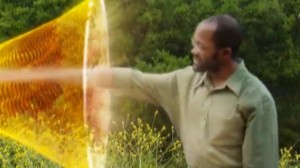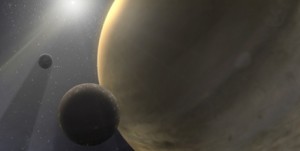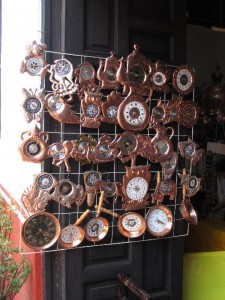“A loose cat in Colorado must wear what?”
(I thought about this for a while, and could only come up with bawdy humorous answers…)
“A tail light.”
(huh?)
[Post written yesterday.] Yes, I am on the bus to work (above was from the on board entertainment system that sometimes asks quiz questions) and it is the start to another week. Another very full one, it is shaping up to be too. I find these days that if I am not careful I tend to measure a week’s potential a mostly in terms of how much time I will have to work on the Project. Like my research, it is not something that is served best by being chipped away at, catching a few minutes here and the between things, but involves a fair amount of immersion. (Having said that, I am getting better at finding tasks that I can allocate to chipping-away time, and I have even found certain things for it that I can do on the bus… A lot of this will become clearer later, I promise.)
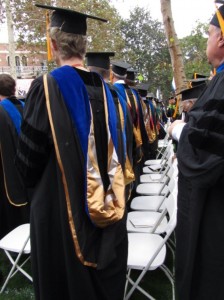 There was certainly a lot going on last week, as I mentioned, and I did not even tell you the half of it. Things like going to see Ira Glass talk about his radio show, essentially doing it in the style of the show, and of course about four hours on Friday spent in costume with hundreds of my faculty colleagues marching in a parade and listening to long (but mostly good) speeches from various Vice-chancellors, Chancellors, Trustees, the Mayor of Los Angeles, and of course, the man of the hour(s), our new President Max Nikias, who we were, er, installing. (When people use that term, and they do here a lot, I always think of plugging in a new electrical appliance, or a new piece of software… I suppose the latter is closer to what we are doing than the former.)
There was certainly a lot going on last week, as I mentioned, and I did not even tell you the half of it. Things like going to see Ira Glass talk about his radio show, essentially doing it in the style of the show, and of course about four hours on Friday spent in costume with hundreds of my faculty colleagues marching in a parade and listening to long (but mostly good) speeches from various Vice-chancellors, Chancellors, Trustees, the Mayor of Los Angeles, and of course, the man of the hour(s), our new President Max Nikias, who we were, er, installing. (When people use that term, and they do here a lot, I always think of plugging in a new electrical appliance, or a new piece of software… I suppose the latter is closer to what we are doing than the former.)
This week sees a lot coming up too, the main thing probably being the first of the Nobel Lunches, scheduled for Thursday. I’ve been very pleased with these events – I […] Click to continue reading this post →


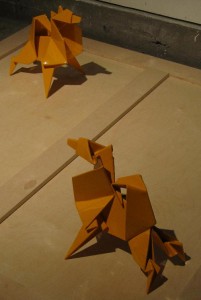
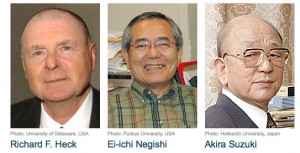 The Royal Swedish Academy of Sciences has decided to award the Nobel Prize in Chemistry for 2010 to Richard F. Heck (University of Delaware, Newark, DE, USA), Ei-ichi Negishi (Purdue University, West Lafayette, IN, USA) and Akira Suzuki (Hokkaido University, Sapporo, Japan), “for palladium-catalyzed cross couplings in organic synthesis”
The Royal Swedish Academy of Sciences has decided to award the Nobel Prize in Chemistry for 2010 to Richard F. Heck (University of Delaware, Newark, DE, USA), Ei-ichi Negishi (Purdue University, West Lafayette, IN, USA) and Akira Suzuki (Hokkaido University, Sapporo, Japan), “for palladium-catalyzed cross couplings in organic synthesis”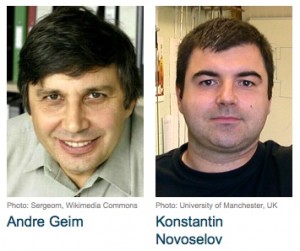 The Royal Swedish Academy of Sciences has decided to award the Nobel Prize in Physics for 2010 to Andre Geim (University of Manchester, UK) and Konstantin Novoselov (University of Manchester, UK) “for groundbreaking experiments regarding the two-dimensional material graphene”
The Royal Swedish Academy of Sciences has decided to award the Nobel Prize in Physics for 2010 to Andre Geim (University of Manchester, UK) and Konstantin Novoselov (University of Manchester, UK) “for groundbreaking experiments regarding the two-dimensional material graphene”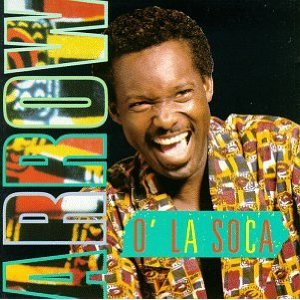 I learned from members of my family the other day that Arrow died last week. I’ve no idea if by name you know who that is, and I am sure if I mentioned his given name, Alphonsus Cassell, that won’t make your eyes light up in recognition. But as soon as I say “Hot Hot Hot”, I bet that there’s a good chance a song starts playing in your mind. It is a Soca song (Soca being a more dance-oriented cousin of Calypso, and the name Arrow was, I think meant to pay homage to the Calypso star the Mighty Sparrow), and may well be the most famous Soca song worldwide. So many times when someone wants to inspire heat – usually involving sunshine – or excitement they play a bit of that song and so it ends up in lots of TV and radio commercials and other such places, and of course is played a lot at parties and other places where people are simply having fun. Arrow wrote and sung a lot of songs, and was devoted to his community, and so many are very sad at his passing, feeling that a friend has gone, even though they might not have known him. Seems to me he had a good life. At the very least, to be known for bringing joy and communion through good music well after you’re gone? That’s a great thing right there.
I learned from members of my family the other day that Arrow died last week. I’ve no idea if by name you know who that is, and I am sure if I mentioned his given name, Alphonsus Cassell, that won’t make your eyes light up in recognition. But as soon as I say “Hot Hot Hot”, I bet that there’s a good chance a song starts playing in your mind. It is a Soca song (Soca being a more dance-oriented cousin of Calypso, and the name Arrow was, I think meant to pay homage to the Calypso star the Mighty Sparrow), and may well be the most famous Soca song worldwide. So many times when someone wants to inspire heat – usually involving sunshine – or excitement they play a bit of that song and so it ends up in lots of TV and radio commercials and other such places, and of course is played a lot at parties and other places where people are simply having fun. Arrow wrote and sung a lot of songs, and was devoted to his community, and so many are very sad at his passing, feeling that a friend has gone, even though they might not have known him. Seems to me he had a good life. At the very least, to be known for bringing joy and communion through good music well after you’re gone? That’s a great thing right there.